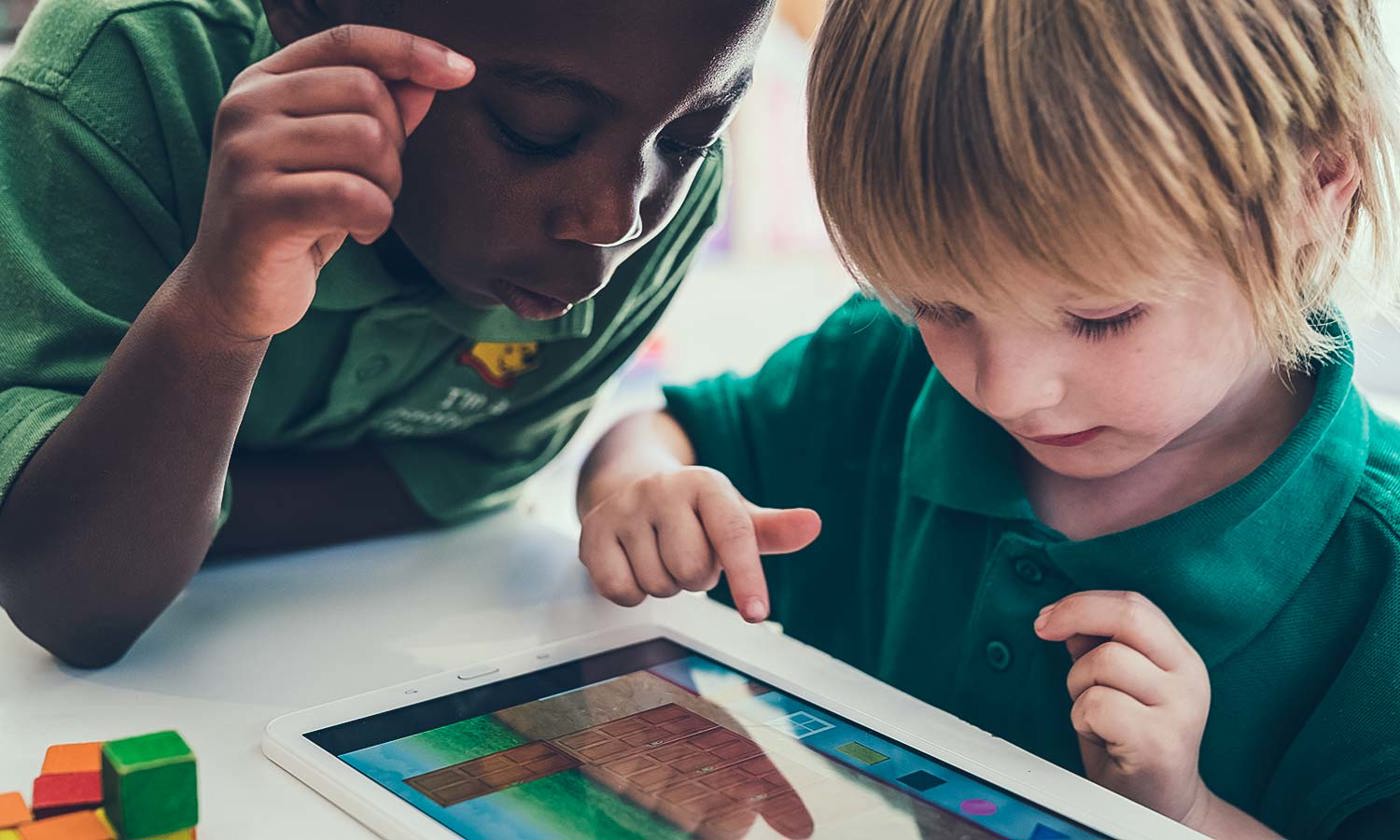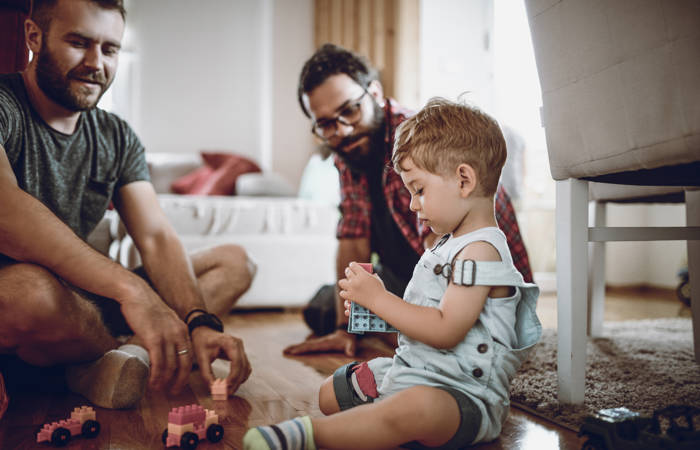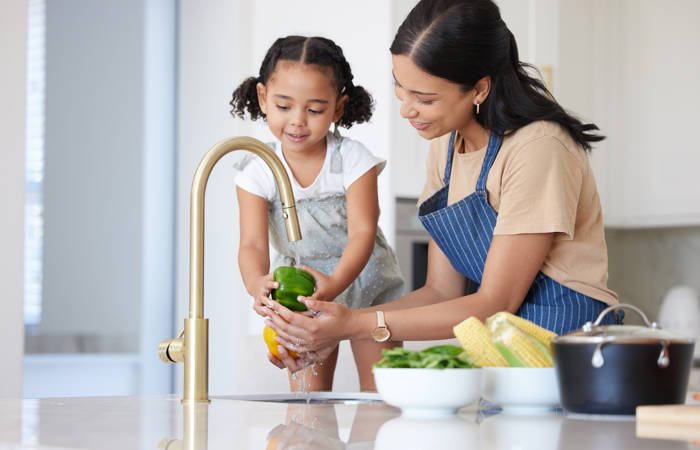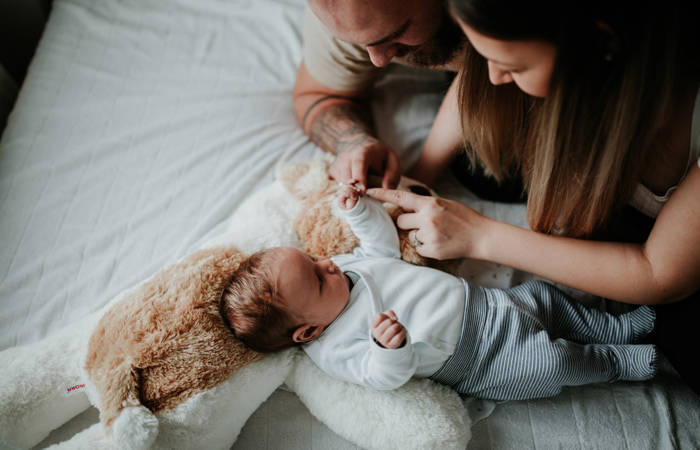Like what you see?
Sign up to receive more free parenting advice.
Thank you for subscribing to our newsletter!
Early Learning

Growing up bilingual brings with it many benefits, including opening up the potential for a lifetime of cross cultural friendships, wider career options and exciting international adventures.
In preschools across Australia, the Early Learning Language Australia (ELLA) program is helping children learn a second language using a fun, digital, play-based language learning program.
The program helps children to become more comfortable with learning a different language early in life so that they can stay engaged with learning languages in later years.
It is an Australian Government evidence-based program that was implemented successfully by preschools over two years of trials in 2015 and 2016. Feedback was overwhelmingly positive from educators, families and children engaged with the program. ELLA was then made nationally available to all eligible Australian preschools from 2017.
In 2018, around 2500 preschools and more than 80,000 children are participating in ELLA across Australia. Every state and territory is taking part. The languages available in 2018 are: Arabic, Chinese (Mandarin), French, Hindi, Indonesian, Italian, Japanese, Modern Greek and Spanish.
Behind the program is research that shows that learning languages develops children's overall literacy, strengthening capabilities that are transferable across learning areas. It also provides children with a head start towards language study at school.
Research shows that exposure to language learning benefits children’s oral language skills in both the target language and home language.Professor Susan Edwards
Susan Edwards, Professor of Education in the Learning Sciences Institute of Australia at the Australian Catholic University, says ELLA is orientated towards laying a foundation for children’s future language learning.
“Research shows that exposure to language learning benefits children’s oral language skills in both the target language and home language,” Professor Edwards says.
“What the research shows us about young children’s language learning is that their brains are still very open and receptive to learning all sorts of languages. So if children are exposed to additional languages in the early years, then that really primes their learning for the continuation of that second language learning in primary school.
“Most primary schools now have to provide an opportunity for children to learn a language other than English. The idea behind ELLA is that if preschool aged children have some exposure even to the idea of second language learning, and even the idea that languages other than their prime home language actually exist, has them ready further language learning once they hit primary school.
“Sometimes we really underestimate the capacity of young children. Young children are amazing learners.
“They’re able to observe, watch, listen, experiment and try the language. So one of the benefits of ELLA is it really capitalises on the strength that young children have for learning.”
The ELLA program includes a suite of materials, including apps for educators and families, resource material and educator support networks, developed through the ELLA trials to support the effective delivery of early language learning in preschool services without the need of a qualified language teacher.
The apps have been custom developed for language learning on tablet devices and provide children the opportunity to develop recognition of the different sounds and concepts of another language through play-based learning.
Children are introduced to words, sentences and songs in the language through age-appropriate experiences.
ELLA has been designed to consider the needs, interests and capabilities of children in preschool. The program provides opportunities for children to learn through interaction with a rich variety of experiences and encourages collaboration between peers and with educators as co-learners.
The language activities in each of the apps are aligned to the learning outcomes in the Early Years Learning Framework (EYLF), a key component of the Australian Government's National Quality Framework for early childhood education and care.
Professor Edwards developed the Pedagogical Play-framework which was used by the app designers working on ELLA.
The Pedagogical Play-framework shows how educators can use open-ended (promotes children’s exploration of a new concept), modelled (illustrates a concept in action by a teacher with children) and purposefully-framed (co-develops an understanding of a concept between teachers and children) play in multiple combinations to support children’s learning in any content area.
“It was used by the app designers working on ELLA to ensure that children’s engagement with the apps would enable opportunities for the children to create their own combinations of these play-types,” Professor Edwards says.
“Then educators are able to also provide opportunities for these play types in a ‘real’ environment.
“In this way, children are moving backwards and forwards between play-types within the app and their actual early learning setting. This creates a rich play-based environment for engaging with the target language and culture.”
Learning another language at a young age is a great way for children to develop an awareness of other cultures and the wider world around them as well as helping them to gain a life-long interest learning other languages.Early Childhood Teacher Yasmin Hunter
At Goodstart Idalia Village Drive in Townsville, early childhood teacher Yasmin Hunter says 25 children are learning Italian through ELLA.
“Learning another language at a young age is a great way for children to develop an awareness of other cultures and the wider world around them as well as helping them to gain a life-long interest learning other languages,” Yasmin says.
“Learning a second language has been shown to have positive impacts on children’s cognitive development as well as helping them to develop positive dispositions and enthusiasm for learning a language in their later years of schooling. It is also great for developing an early awareness of other cultures.”
Yasmin says the centre has also embedded cultural learning into their program through song, cooking Italian food, exploring maps and creating art.
She said the feedback from families had been quite supportive.
“The reaction we have had to the program has been really positive. The families have been excited that their children have the opportunity to participate in such a fantastic program and we have been receiving feedback about words and phrases the children have been using at home.
“One of the children invited their Italian Nona in for show and tell and she spoke with the children about Italy and sang some Italian songs.”




